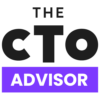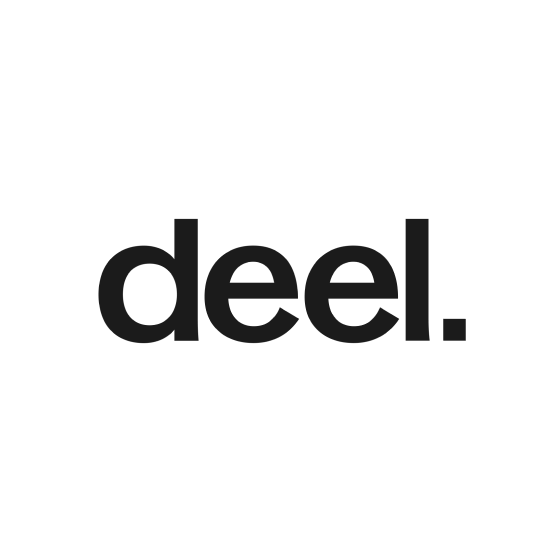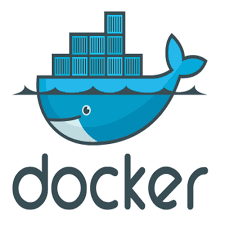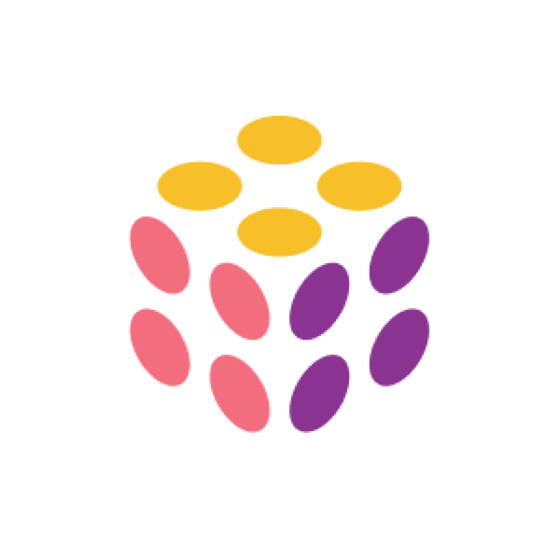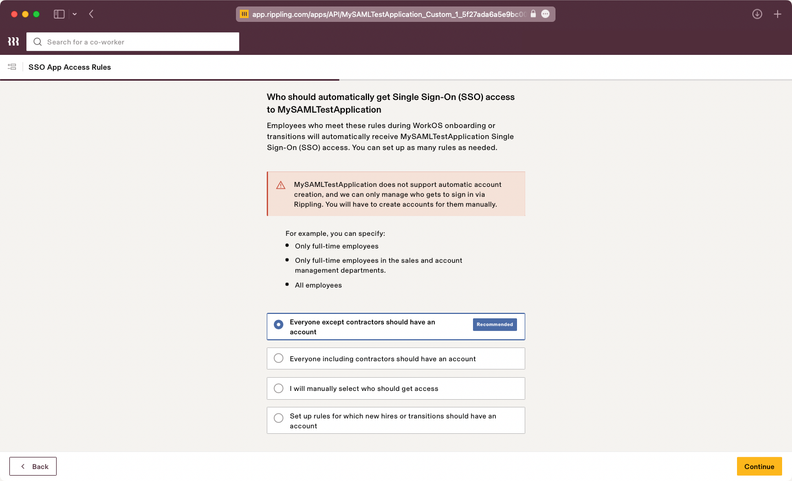Best Mobile Application Management Software Shortlist
Here’s my shortlist of the best mobile application management software:
Our one-on-one guidance will help you find the perfect fit.
Managing mobile applications across a growing mix of devices, OS versions, and user profiles can feel like trying to fix a plane mid-flight. You’ve got to enforce security policies, support productivity, and keep compliance teams happy—all without slowing anyone down. And when tools don't integrate cleanly or scale with your needs, you're left stitching together temporary fixes that just don’t hold up.
I’ve worked with IT teams navigating these exact challenges—selecting, testing, and deploying mobile application management software across diverse enterprise setups. I know where things tend to break, what really saves time, and which features are more hype than help.
In this guide, I’ll walk you through mobile application management tools that genuinely ease the burden: helping you maintain control, reduce friction, and ensure your apps and users stay secure, productive, and compliant.
Why Trust Our Software Reviews
We’ve been testing and reviewing SaaS development software since 2023. As tech experts ourselves, we know how critical and difficult it is to make the right decision when selecting software. We invest in deep research to help our audience make better software purchasing decisions.
We’ve tested more than 2,000 tools for different SaaS development use cases and written over 1,000 comprehensive software reviews. Learn how we stay transparent & check out our software review methodology.
Best Mobile Application Management Software Summary
This comparison chart summarizes pricing details for my top mobile application management software selections to help you find the best one for your budget and business needs.
| Tool | Best For | Trial Info | Price | ||
|---|---|---|---|---|---|
| 1 | Best for global compliance | Free trial + demo available | From $29/month | Website | |
| 2 | Best for secure app access | Free trial available | From $8/user/month (billed annually) | Website | |
| 3 | Best for real-time monitoring | Free trial + demo available | Pricing upon request | Website | |
| 4 | Best for identity management | Free demo available | Pricing upon request | Website | |
| 5 | Best for secure access | Free demo available | Pricing upon request | Website | |
| 6 | Best for unified endpoint management | Not available | From $3/device/month (billed annually) | Website | |
| 7 | Best for smooth app and device integration | Not available | Pricing upon request | Website | |
| 8 | Best for application control | Free demo available | Pricing upon request | Website | |
| 9 | Best for Apple device management | 14-day free trial | From $5.75/device/month (billed annually) | Website | |
| 10 | Best for secure messaging | Free demo available | Pricing upon request | Website |
-

Docker
Visit WebsiteThis is an aggregated rating for this tool including ratings from Crozdesk users and ratings from other sites.4.6 -

Pulumi
Visit WebsiteThis is an aggregated rating for this tool including ratings from Crozdesk users and ratings from other sites.4.8 -

GitHub Actions
Visit Website
Best Mobile Application Management Software Review
Below are my detailed summaries of the best mobile application management software that made it onto my shortlist. My reviews offer a detailed look at the key features, pros & cons, integrations, and ideal use cases of each tool to help you find the best one for you.
Deel is a mobile application management software designed for global teams. It primarily serves businesses looking to manage IT operations across multiple countries, focusing on compliance and automation.
Why I picked Deel: Deel excels in managing IT operations in over 130 countries, making it ideal for global compliance. It automates the entire worker lifecycle, from procurement to offboarding, ensuring you don't have to worry about manual processes. Its features include remote device configuration and automated asset tracking, which are crucial for managing a dispersed workforce. Deel's system also supports secure data recovery, adding an extra layer of security to your operations.
Standout features & integrations:
Features include automated lifecycle management, which covers every stage from procurement to offboarding, ensuring your team is equipped from day one. It supports remote device configuration, allowing you to manage devices without physical presence. Automated asset tracking keeps you informed about device status and usage, helping you maintain control over your resources.
Integrations include popular platforms like BambooHR, Workday, SAP SuccessFactors, Greenhouse, Lever, ADP, Namely, Gusto, Zenefits, and Rippling.
Pros and cons
Pros:
- Supports over 130 countries
- Strong automation features
- Extensive global reach
Cons:
- Requires a better intuitive design
- Complicated navigation system
New Product Updates from Deel
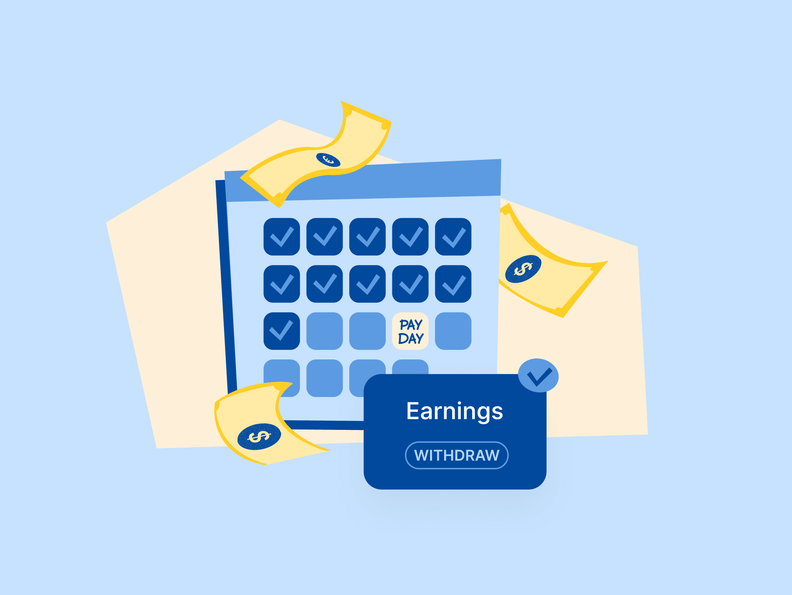
Deel Launches Anytime Pay Beta for Daily Earnings Access
Deel introduced an Anytime Pay beta, allowing EOR workers with Deel Cards to withdraw earned pay daily. Automatic tax and ledger updates are included, with PEO and Global Payroll support coming soon. More details at Deel Blog.
Rippling IT offers mobile application management solutions that support device and identity management for Apple and Windows environments. It’s built for IT teams who want to control app access, enforce security policies, and manage devices remotely—without getting stuck in manual IT workflows.
Why I picked Rippling IT: I picked Rippling because it makes it easier to restrict app access to only trusted users and devices. It supports identity and access management with built-in single sign-on and role-based provisioning, so you can control who gets access to what. You also get device-level visibility and control across operating systems, helping you stay on top of both compliance and security without increasing IT overhead.
Standout features & integrations:
Features includes dynamic MFA, remote lock and wipe, and SOC 2 and ISO 27001 compliance reporting. It supports Bash and PowerShell scripting for automating IT workflows. You can monitor device health in real time, enforce password policies, and restrict access by location or IP.
Integrations include Slack, Checkr, Google, Zoom, Asana, Salesforce, Microsoft 365, GitHub, Carta, Jira, Hubspot, and Microsoft Teams.
Pros and cons
Pros:
- Automates provisioning and compliance reporting
- Zero-touch deployment for Apple and Windows devices
- Built-in SSO and MFA for secure app access
Cons:
- Limited flexibility in customizing onboarding workflows
- Admin interface can feel crowded during setup
New Product Updates from Rippling IT
Assign Identity Providers by Team with Rippling IT
Rippling IT now allows assigning specific identity providers like Okta and Entra ID to different teams, with Rippling’s SSO as a backup for instant rollbacks. More details at Rippling Blog.
Site24x7 is a monitoring solution tailored for businesses needing real-time insights into website, server, cloud, and application performance. It's particularly useful for IT teams seeking to ensure optimal uptime and service quality.
Why I picked Site24x7: This tool excels in providing real-time monitoring across multiple platforms, which is crucial for maintaining service quality. Its real user monitoring (RUM) feature lets you analyze user experiences directly, offering insights into customer interactions. Synthetic web transaction monitoring simulates user actions, helping identify potential issues before they affect real users. Network monitoring ensures that critical devices are always performing well, providing peace of mind for your IT team.
Standout features & integrations:
Features include log management for troubleshooting, allowing you to analyze logs from different sources. IT monitoring powered by AIOps helps detect anomalies, so you can address issues proactively. Cloud cost management gives you insights into your cloud spending, helping your team optimize resources.
Integrations include Jira, Slack, Microsoft Teams, Zapier, ServiceNow, PagerDuty, Trello, Zoho CRM, Zendesk, and Opsgenie.
Pros and cons
Pros:
- Easy setup process
- Extensive monitoring features
- Real-time insights
Cons:
- Requires constant updates
- It can be overwhelming for beginners
New Product Updates from Site24x7
Site24x7's End-to-End Observability for OCI Gateways
Site24x7 introduces the monitoring of OCI internet gateways to ensure connectivity and security. For more information, visit Site24x7's official site.
Cyberark is a security-focused mobile application management software aimed at enterprises needing strong identity management solutions. It's ideal for IT teams that prioritize safeguarding sensitive information and managing user access effectively.
Why I picked Cyberark: The tool offers advanced identity management features, crucial for businesses handling sensitive data. Its privileged access management controls who can access critical systems, ensuring your data remains secure. Threat detection and response capabilities help identify and mitigate risks before they become problems. Multi-factor authentication adds an extra layer of security, making it a reliable choice for protecting your organization's assets.
Standout features & integrations:
Features include session monitoring that records and monitors user activities, providing insights into access patterns. Compliance management helps you meet regulatory requirements, reducing the risk of non-compliance penalties. Automated password management simplifies credential handling, ensuring your team doesn't have to worry about password security.
Integrations include ServiceNow, Splunk, SailPoint, Palo Alto Networks, AWS, Microsoft Azure, Google Cloud, Okta, VMware, and IBM Security.
Pros and cons
Pros:
- Supports multi-factor authentication
- Advanced threat detection
- Strong identity management
Cons:
- Limited customization options
- High learning curve
MobileIron is a mobile device management solution designed for enterprises focused on providing secure access to corporate data. It's ideal for IT teams looking to manage and secure endpoints across various devices and platforms.
Why I picked MobileIron: The tool provides secure access to corporate resources, which is essential for businesses managing sensitive data. Its zero-trust security framework ensures that only authorized users can access company information. MobileIron's device management capabilities allow you to control and secure devices remotely, enhancing your team's ability to maintain security. The software also offers threat detection features to identify and mitigate potential security risks.
Standout features & integrations:
Features include app management, which lets you deploy and manage applications across devices. Conditional access policies help ensure that only compliant devices can access corporate resources. MobileIron also offers remote wipe capabilities, allowing you to erase data from lost or stolen devices to protect sensitive information.
Integrations include Microsoft Azure, Cisco, Splunk, ServiceNow, Okta, Palo Alto Networks, Zscaler, Aruba, Ping Identity, and Salesforce.
Pros and cons
Pros:
- Remote wipe capabilities
- Strong security framework
- Effective threat detection
Cons:
- Requires technical knowledge
- Can be resource-intensive
VMware Workspace ONE is a unified endpoint management solution designed for businesses looking to manage all devices from a single platform. It serves IT teams that need comprehensive control over both mobile and desktop environments.
Why I picked VMware Workspace ONE: It offers unified endpoint management, allowing you to manage all your devices from a single console, a feature critical for maintaining consistency across platforms. The software provides conditional access policies to ensure that only compliant devices can access your network. Its digital workspace feature lets your team access applications and resources securely from anywhere. Additionally, Workspace ONE's automation capabilities simplify repetitive tasks, freeing up your IT resources.
Standout features & integrations:
Features include remote management, which allows you to troubleshoot and resolve issues without being physically present. The software also offers comprehensive compliance reporting, helping you track and meet regulatory requirements. Customizable dashboards give you a quick overview of device status and alerts, keeping your team informed and proactive.
Integrations include Microsoft Office 365, ServiceNow, Salesforce, SAP, Google Workspace, Cisco, Okta, Zoom, Slack, and IBM Security.
Pros and cons
Pros:
- Customizable dashboards
- Strong unified management capabilities
- Effective automation features
Cons:
- Requires technical expertise
- High resource consumption
Citrix Endpoint Management is a unified endpoint management solution that enables IT teams to manage and secure mobile devices, applications, and data from a single platform. It supports both cloud-based and on-premises deployments, offering flexibility for various organizational needs.
Why I picked Citrix Endpoint Management:
Citrix Endpoint Management offers a centralized console that allows your team to configure, secure, and manage a wide range of devices, including smartphones, tablets, laptops, and desktops. It provides over 300 security policies to ensure compliance and protect sensitive data across all endpoints. The platform supports Android Enterprise work profiles, enabling the separation of work and personal data on devices, which helps maintain user privacy while allowing IT to manage work-related applications and data.
Standout features & integrations:
Features include the ability to enforce password protection on devices, restrict access from jailbroken or rooted devices, and enable encryption for select applications and data at rest and in motion. The platform also offers remote lock and wipe capabilities, allowing you to selectively remove business data from devices without affecting personal information
Integrations include Citrix Workspace, Citrix Secure Mail, Citrix Secure Web, Citrix Files, Microsoft Intune, Microsoft Office 365, Google Workspace, Salesforce, ServiceNow, and Slack.
Pros and cons
Pros:
- Integrates with Citrix Workspace for unified access
- Supports both cloud and on-premises deployments
- Offers over 300 security policies
Cons:
- Steep learning curve for new users
- May have compatibility issues with some third-party apps
Check Point is a security solution designed for enterprises needing detailed control over applications. It caters to IT teams who want to protect their networks by managing which applications can operate within their environment.
Why I picked Check Point: This tool provides granular application control, which is essential for organizations wanting to safeguard their networks. The software lets you set policies that determine how applications can be used, enhancing security. Real-time monitoring provides insights into application usage, helping your team identify potential threats. Additionally, Check Point's threat prevention features work to block malicious traffic before it reaches your network.
Standout features & integrations:
Features include detailed logging, which records application activity for further analysis. The software offers automated updates to keep your security measures current without manual intervention. Customizable alerts notify your team of unusual activity, allowing for quick responses to potential threats.
Integrations include Microsoft Azure, AWS, Google Cloud Platform, VMware, Cisco, IBM Security, Splunk, ServiceNow, Palo Alto Networks, and Fortinet.
Pros and cons
Pros:
- Granular application control
- Real-time monitoring capabilities
- Strong threat prevention features
Cons:
- Complex initial configuration
- Limited customization for policies
Jamf Pro is a mobile device management solution tailored for organizations relying heavily on Apple devices. It's ideal for IT teams that need to manage and secure a fleet of Macs, iPads, and iPhones effectively.
Why I picked Jamf Pro: Jamf Pro specializes in managing Apple devices, making it a perfect fit for teams using Apple's ecosystem. Its device enrollment program streamlines the onboarding of new devices, ensuring they're ready for use with minimal effort. Configuration profiles allow you to set up devices with the necessary settings and restrictions. The self-service app empowers users to install apps and resources without needing IT assistance, enhancing productivity.
Standout features & integrations:
Features include automated patch management, which helps keep your software up-to-date by automatically applying updates. Smart targeting allows you to deploy configurations and apps based on specific criteria, ensuring the right resources reach the right devices. Inventory management gives you a comprehensive view of all your Apple devices, helping you maintain control over your fleet.
Integrations include Microsoft Azure, Google Workspace, Cisco Meraki, ServiceNow, Splunk, Okta, VMware, SAP, AWS, and IBM Security.
Pros and cons
Pros:
- Strong configuration options
- Easy device enrollment
- Excellent Apple ecosystem support
Cons:
- Complex for new users
- Requires Apple expertise
BlackBerry UEM is an enterprise mobility management solution geared towards organizations that prioritize secure communication. It's perfect for businesses needing to protect sensitive information across mobile devices.
Why I picked BlackBerry UEM: It offers secure messaging capabilities, which are vital for organizations focused on safeguarding communication. The platform provides end-to-end encryption, ensuring your team's messages stay private. Its containerization feature separates work data from personal data, enhancing security. Additionally, BlackBerry UEM supports a wide range of devices, allowing you to manage them all from a single console.
Standout features & integrations:
Features include policy management, enabling you to enforce security policies across devices easily. The software offers advanced threat protection to help safeguard against potential cyber threats. Application management lets you control app deployment and updates, ensuring your team uses the most secure versions.
Integrations include Microsoft Office 365, Microsoft Teams, IBM MaaS360, ServiceNow, Splunk, Salesforce, SAP, Cisco Webex, Zoom, and Google Workspace.
Pros and cons
Pros:
- Comprehensive policy management
- Strong encryption for messaging
- Supports a wide range of devices
Cons:
- Complex setup process
- Requires regular updates
Other Mobile Application Management Software
Here are some additional mobile application management software options that didn’t make it onto my shortlist, but are still worth checking out:
- SOTI MobiControl
For cross-platform support
- Esper
For Android deployments
- PolicyPak
For policy management
- ManageEngine
For IT service management
- Microsoft Intune
For Windows integration
- IBM Security MaaS360
For AI-driven insights
- Digital.ai
For DevOps integration
- 42Gears
For small business needs
- Applivery
For app distribution
- Airdroid
For remote device access
- Hexnode
For cross-platform support
- Meraki
For cloud-based management
- WizyEMM
For enterprise mobility
- SquareStack
For SaaS management
- Appaloosa
For app security
Mobile Application Management Software Selection Criteria
When selecting the best mobile application management software to include in this list, I considered common buyer needs and pain points like device security and compliance with data regulations. I also used the following framework to keep my evaluation structured and fair:
Core Functionality (25% of total score)
To be considered for inclusion in this list, each solution had to fulfill these common use cases:
- Device enrollment and management
- Application deployment and updates
- Security policy enforcement
- Remote device wipe
- Compliance monitoring
Additional Standout Features (25% of total score)
To help further narrow down the competition, I also looked for unique features, such as:
- Geofencing capabilities
- Advanced threat detection
- AI-driven analytics
- Customizable dashboards
- Offline device management
Usability (10% of total score)
To get a sense of the usability of each system, I considered the following:
- Intuitive user interface
- Ease of navigation
- Minimal training required
- Clear documentation
- Responsive design
Onboarding (10% of total score)
To evaluate the onboarding experience for each platform, I considered the following:
- Availability of training videos
- Access to interactive product tours
- Use of chatbots for guidance
- Provision of templates and guides
- Regular webinars for users
Customer Support (10% of total score)
To assess each software provider’s customer support services, I considered the following:
- Availability of 24/7 support
- Multiple support channels
- Access to a knowledge base
- Speed of response
- Quality of support provided
Value For Money (10% of total score)
To evaluate the value for money of each platform, I considered the following:
- Competitive pricing
- Feature set relative to cost
- Availability of free trials
- Transparent pricing structure
- Discounts for long-term contracts
Customer Reviews (10% of total score)
To get a sense of overall customer satisfaction, I considered the following when reading customer reviews:
- Consistency of positive feedback
- Commonly mentioned strengths
- Recurring complaints or issues
- Overall user satisfaction
- Feedback on support and service quality
How to Choose Mobile Application Management Software
It’s easy to get bogged down in long feature lists and complex pricing structures. To help you stay focused as you work through your unique software selection process, here’s a checklist of factors to keep in mind:
| Factor | What to Consider |
| Scalability | Ensure the software can grow with your team. Look for solutions that can handle an increasing number of devices and users without sacrificing performance or features. |
| Integrations | Check if the software integrates with your existing tools, such as email platforms, CRM systems, and security solutions, to streamline workflows and enhance productivity. |
| Customizability | Choose software that allows you to tailor features and settings to fit your organization's specific needs, ensuring it aligns with your business processes. |
| Ease of Use | Look for intuitive interfaces that require minimal training. Your team should be able to navigate the system easily and perform tasks without constant support. |
| Budget | Consider the total cost of ownership, including licensing fees, implementation costs, and ongoing maintenance. Ensure the solution fits within your financial constraints. |
| Security Safeguards | Prioritize software with strong security features, like encryption and multi-factor authentication, to protect sensitive data and comply with regulations. |
| Support | Evaluate the quality and availability of customer support. Reliable support channels can make a difference when resolving issues quickly. |
| Deployment Options | Consider whether you need a cloud-based solution, on-premises, or a hybrid deployment, depending on your infrastructure and security requirements. |
Trends in Mobile Application Management Software
In my research, I sourced countless product updates, press releases, and release logs from different mobile application management software vendors. Here are some of the emerging trends I’m keeping an eye on:
- AI-Driven Insights: More vendors are using AI to provide predictive analytics and insights into device performance and security threats. This helps IT teams anticipate issues before they occur, allowing for proactive management and improved decision-making.
- Enhanced Security Protocols: With increasing cyber threats, vendors are focusing on advanced security measures like zero-trust architecture and biometric authentication. These features ensure only authorized users access sensitive data, protecting businesses from breaches.
- Unified Endpoint Management: Combining mobile and desktop management into one platform is becoming more popular. This trend simplifies operations by allowing IT teams to manage all devices from a single console, improving efficiency and oversight.
- User Experience Focus: Vendors are prioritizing user-centric design to make interfaces more intuitive. Simplified dashboards and customizable views enhance usability, ensuring teams can easily perform tasks without extensive training.
- Sustainability Features: There's a growing emphasis on eco-friendly practices, with features that promote energy efficiency and device longevity. Vendors are incorporating tools to monitor and reduce the environmental impact of device usage.
What Is Mobile Application Management Software?
Mobile application management software is a tool that helps organizations manage and secure mobile applications on devices used by employees. IT professionals and administrators primarily use these tools to ensure apps are deployed, updated, and secured effectively.
Device enrollment, security policy enforcement, geofencing software, and remote device wipe capabilities support efficient management and protection of corporate data. Overall, these tools provide businesses with the control needed to maintain security and productivity in a mobile workforce.
Features of Mobile Application Management Software
When selecting mobile application management software, keep an eye out for the following key features:
- Device enrollment: Automates the process of adding new devices to the management system, saving time and ensuring consistency.
- Security policy enforcement: Applies security rules across all devices to protect sensitive data and maintain compliance.
- Application deployment: Facilitates the distribution and updating of apps on managed devices, ensuring users have the latest versions. A well-developed MAM will also ensure proper updates for Android emulators on Mac devices.
- Remote device wipe: Allows administrators to erase data on lost or stolen devices, protecting company information.
- Compliance monitoring: Tracks device and application compliance with regulatory standards, helping avoid penalties.
- Geofencing capabilities: Set virtual boundaries for devices, enhancing security by controlling access based on location.
- Threat detection: Identifies potential security threats in real-time, enabling swift action to mitigate risks.
- User experience focus: Provides an intuitive interface that simplifies navigation and reduces the need for extensive training.
- Customizable dashboards: Offers tailored views of device data and alerts, helping administrators focus on critical information.
- Advanced reporting: Generates detailed reports on device usage and compliance, supporting informed decision-making.
Benefits of Mobile Application Management Software
Implementing mobile application management software provides several benefits for your team and your business. Here are a few you can look forward to:
- Enhanced security: By enforcing security policies and offering remote wipe capabilities, it protects sensitive data from unauthorized access.
- Increased efficiency: Automated device enrollment and application deployment save time, allowing your IT team to focus on other tasks.
- Improved compliance: Compliance monitoring ensures devices and apps meet regulatory standards, reducing the risk of penalties.
- Better control: Geofencing and threat detection provide control over device access and security threats, keeping your network safe.
- User empowerment: With user-friendly interfaces and customizable dashboards, your team can navigate and manage devices with ease.
- Data-driven decisions: Advanced reporting provides insights into device usage and compliance, supporting informed decision-making.
- Flexibility: Cross-platform support allows you to manage various device types from a single platform, simplifying operations.
Costs and Pricing of Mobile Application Management Software
Selecting mobile application management software requires an understanding of the various pricing models and plans available. Costs vary based on features, team size, add-ons, and more. The table below summarizes common plans, their average prices, and typical features included in mobile application management software solutions:
Plan Comparison Table for Mobile Application Management Software
| Plan Type | Average Price | Common Features |
| Free Plan | $0 | Basic device management, limited security features, and basic reporting. |
| Personal Plan | $5-$15 /user /month | Device enrollment, application deployment, security policy enforcement, and support. |
| Business Plan | $20-$40 /user /month | Advanced security features, compliance monitoring, remote wipe, and geofencing. |
| Enterprise Plan | $50-$100 /user /month | Customizable dashboards, advanced reporting, dedicated support, and full integration. |
Mobile Application Management Software FAQs
Here are some answers to common questions about mobile application management software:
Does MAM require device registration?
Mobile Application Management (MAM) doesn’t always require device registration. It’s often used for managing apps on personal devices without enrolling them in a device management system. This allows users to access organization resources like email and meetings while maintaining personal privacy.
How does mobile application management work?
MAM software secures and gives IT control over enterprise apps on both corporate and personal devices. It allows IT administrators to enforce corporate policies on apps and limit data sharing. This ensures that business data stays secure while employees use their own devices.
What is the difference between app protection policy and MDM?
App protection policies focus on securing the apps and data, while Mobile Device Management (MDM) secures the entire device. MDM software can enforce device-wide policies like requiring a PIN, whereas app protection policies protect data within specific apps, even on personal devices.
Can MAM be used on personal devices?
Yes, MAM can be deployed on personal devices to manage and secure corporate applications without affecting personal data. This approach supports BYOD (Bring Your Own Device) policies, allowing employees to use their own devices for work purposes securely.
What platforms support MAM?
MAM is typically supported on major platforms like Android and iOS/iPadOS. This allows organizations to manage applications across a wide range of devices, ensuring compatibility with the most common mobile operating systems used in businesses today.
How does MAM enhance security?
MAM enhances security by allowing IT teams to enforce app-level policies, such as requiring encryption and restricting data sharing. It ensures that sensitive information remains protected, even on devices that aren’t fully managed by the organization’s IT department.
What's Next?
Boost your SaaS growth and leadership skills. Subscribe to our newsletter for the latest insights from CTOs and aspiring tech leaders. We'll help you scale smarter and lead stronger with guides, resources, and strategies from top experts!

